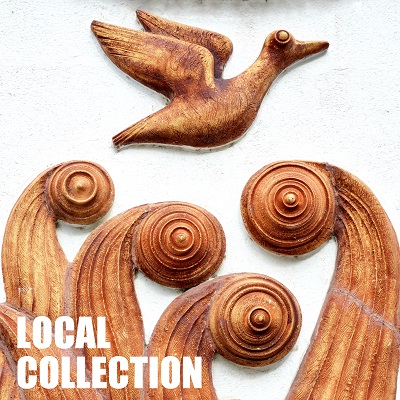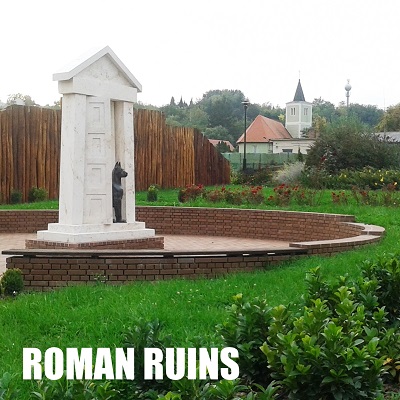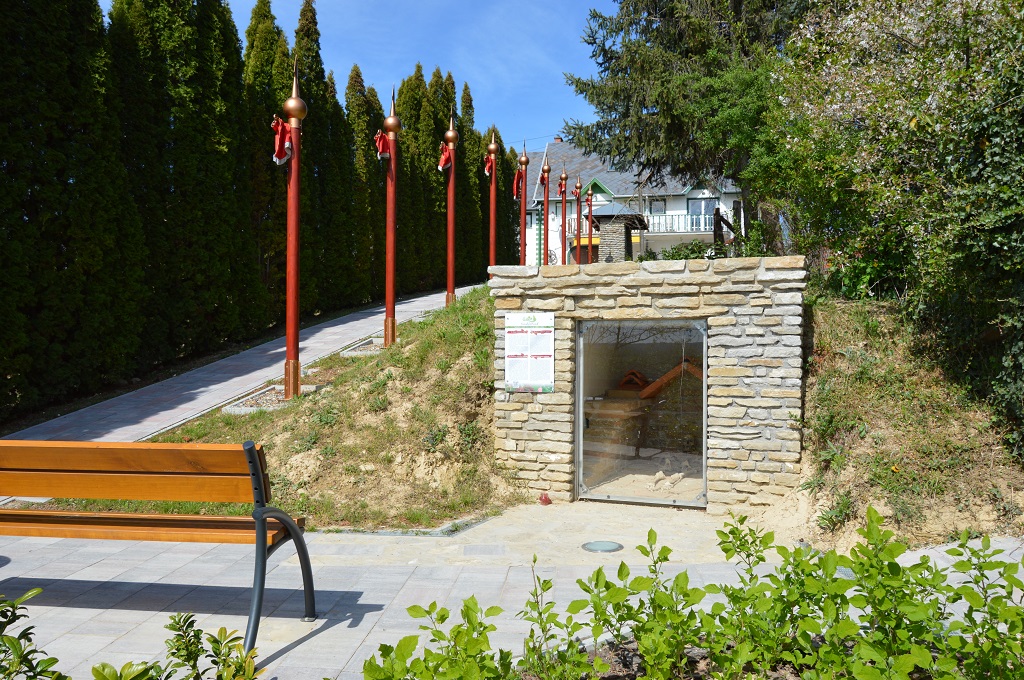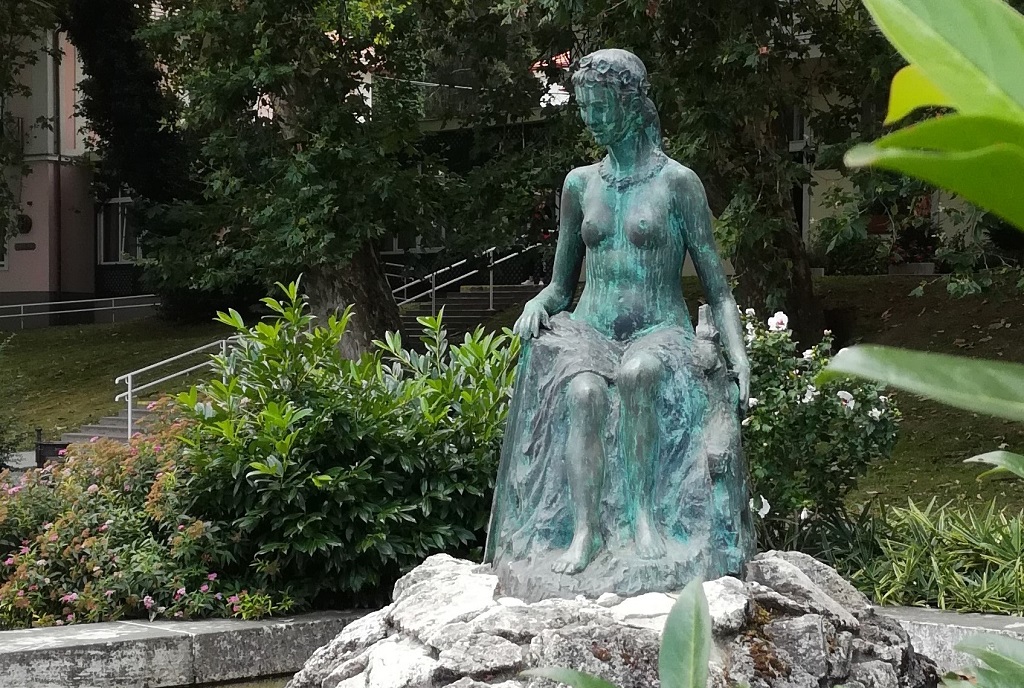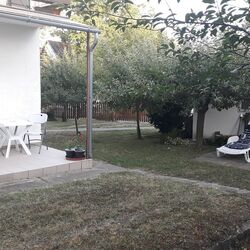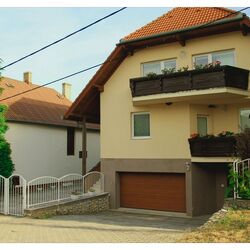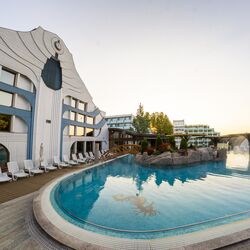Tomb of the Roman soldier
The tomb of the Roman soldier, or the late Roman brick-tomb is located in the Egregy part of Heviz. The tomb was made out of bricks with quicklime.It has been discovered in 1925 when doing earthworks and it was fully intact.
The objects found in the tomb were from the era of the Roman imperator Constantinus II. Bronze belt decoration, cloth clamps, knife made of iron, coins of the imperator and of course the skeleton of a Roman soldier were found. The findings were placed in the Balaton Museum located in Keszthely, and the skeleton was left on its place. In 1931 the ruins of a Roman cottage of the early Augustan age were discovered a few hundred meters to the East of the tomb, in the neighbourhood of the Villa Rustica excavated between 2001 and 2004. The house was built at the end of the 1st century. The findigs suggest that the building must have been richly decorated and it was still in use in the 4th century. When digging in the backyard of one of the houses of Egregyi Street a brick burning kiln was found.
The items discovered in the neighbouring area testify that man of means have been staying here long time ago. For example on the way to the church to the Arpadian age there was a clay pot found, and there were 276 pieces of Roman coins from the 4th century in it.
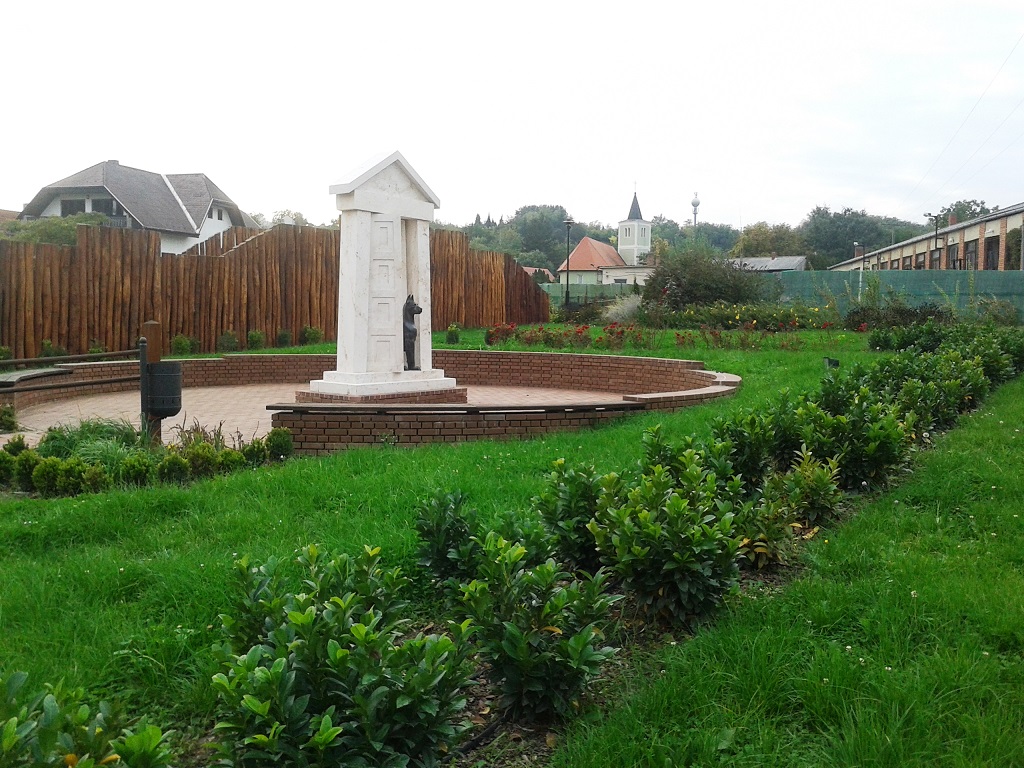
Roman ruin garden
Even the ancient Romans discovered and used the lake of Hévíz. This is shown by the roman ruin garden located at the end of Attila Street, which was completely renovated in 2011. The remains of the roman villa from the early Imperial times were discovered in 1931 and then the building of Villa Rustica was excavated between 2001 and 2003 in its vicinity.
The house was built at the end of the 1st century. According to the findings it must have been a richly decorated building and it was used even in the 4th century.
At the turn of the 1st and 2nd centuries a large stone building was erected in its place which was 45 meters long and almost 23 meters wide, therefore more than 1000 square meters. The building had a porticus (columned porch) on the eastern side and some pools with warm, lukewarm and cold water. But it is not certain whether the building was the residential building (villa urbana) of the villa-farm, since there was no evidence of central heating.
The building is believed to have been ruined towards the end of the 2nd century, but in the 3rd century it was rebuilt with other interior design. Even a Mithras shrine was built in. The foundation stone of the altar was discovered during the excavation. The shrine and the building were destroyed in the 4th century, but soon it was rebuilt. At the beginning of the 5th century it was ruined completely. The function of the building is uncertain also in this period. Probably it was used for some kind of economic activity.
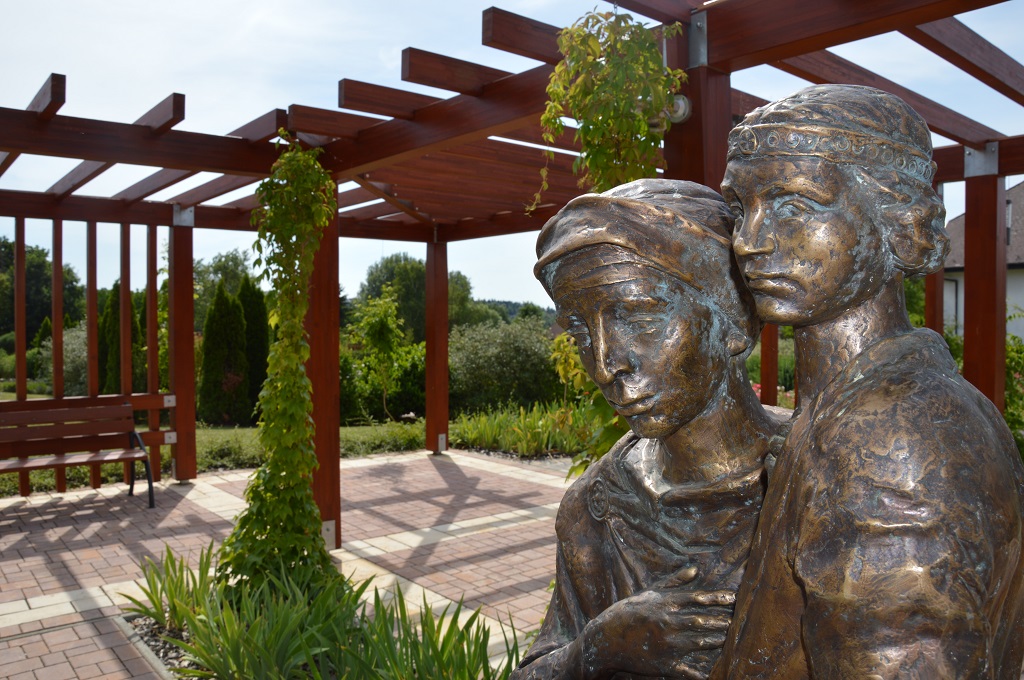
Flavius wish ribbons at the ruins of Villa Rustica
Hundreds of wishes written on ribbons make the Roman ruin garden, located at the Museum of Egregy at the end of Attila Street, decorated. Placing colourful ribbons revive a Roman legend.
The most well-known Hévíz legend about the formation of the lake and its miraculous effect is linked to the Roman Emperor Flavius Theodosius.
According to the legend, Flavius suffered from infantile paralysis. Every day, his Christian nurse prayed to Virgin Mary asking for the boy’s recovery. Virgin Mary answered her prayers and brought forth water. A whole lake was formed from the thermal spring. The nurse bathed the ill child in the water of the lake regularly.
Miraculously, Flavius got over his illness by the help of the water and became a strong, healthy ruler, the emperor of the Roman Empire. Out of gratitude, he declared Christianity the official religion throughout the realm in 391.
The legendary curative lake is none other than Lake Hévíz, in the water of which thousands of patients have been healed and have regained the pleasure of healthy movement since then.
Local collections
In Hévíz you can find recreation facilities not only for your body but for your mental condition as well. In the course of a nice afternoon walk it is worth visiting the Hévíz Museum Collection, which can find above the Fontana Cinema in the walking street. The permanent exhibition allows visitors to get insight into the 210-year past of Hévíz in the room of the local history. Visitors can also see the memorial room named after dr. Károly Moll, which was set up in commemoration of the famous doctors from Hévíz.
In the Museum there are also some temporary exhibitions to be visited apart from the permanent one.
The Museum’s permanent exhibitions are “History of Hévíz”, “Memories from Hévíz Spa”, ”Medical History Memorial Room for Senior dr. Károly Moll” and “Exhibitions of artist József Simon”.
The outside front of the building is decorated with the work named “Spring” by Munkácsy Prize awarded ceramic artist János Németh. The Museum is open for visitors between 10 a.m. and 6 p.m. from Tuesday to Saturday. There are no admission fees.
If you come to Héviz for a fairly long time and you also consider cultural programs important during a medicinal cure, the Zsigmond Móricz Town Library might be interesting for you; you can borrow books both in Hungarian and foreign languages there.
Beside the Museum you can also find temporary exhibitions on several other spots of the town, for instance, in the Gallery of the Fine Arts of the Aquamarine Hotel there are exhibitions regularly, where tourists can meet artists in person at the opening of the exhibitions or in the Show Room of the Magyar Csárda Restaurant being in service for more than 15 years, and major hotels also organize exhibitions of fine arts on temporary basis. The exhibitions may be visited free of charge.
And once the Fontana Motion Picture Theatre has been mentioned, we recommend the cinema as an entertaining evening program for young visitors. Having a cinema is quite unusual in the area, as there is no cinema even in Keszthely. The cinema has a seating capacity of 104 persons. Recently new digital technology equipment has been installed; as a result, both the video and the sound technique meet the most modern requirements. However, we should warn visitors not to expect the standard of multiplex cinemas but they should imagine a nice cinema typical of small towns.
Have fun and enjoy mental recreation.

